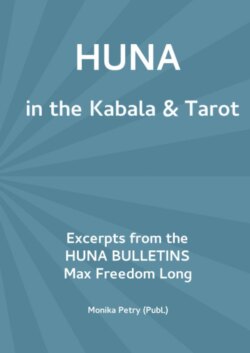Читать книгу Max Freedom Long HUNA in the Kabala & Tarot - Monika Petry - Страница 10
На сайте Литреса книга снята с продажи.
HUNA VISTAS BULLETIN 3
ОглавлениеPresent Study: Taro Cards
November, 1959
INFORMATION ON TARO CARD SYMBOL MEANINGS continues to arrive, some taken from books and/or courses, but some individually evolved. Everything is happily tossed into the pot, and there is, as yet, no telling what the brew will turn out to be. The distant lands are now reporting in. Several varieties of Taro pack have been mentioned, most of them new to me. For the present we will use the set designed by Waite and for sale by FATE magazine, whose address was given as the Clark Publishing Co., in the last issue of HUNA VISTAS.
SPEAKING OF FATE MAGAZINE (to which I subscribe), several of the HRAs have written to call my attention to an article on the cards titled, “Playing Cards Mystic Symbols Of Ancient Egypt.” It was written by Leigh Wakefield, who has nicely presented the current beliefs covering the Egyptian origin of the cards, but, of course, offers little real proof of the verity of his claims. The article is illustrated with a poor reproduction of two wall paintings from an unspecified date, but of the early period. The faces are, so far as I could make out, all drawn in profile, which was the customary way for flat surfaces in the early dynasties. As I pointed out in the earlier release, the Tarot Cards have full face drawings predominant. The article argues that the pips on our cards are deduced from Egyptian firsts, with the red and black symbolizing light and darkness as indicative of Set and Ra. That is all well enough, but we can make the various characteristics of the symbols fit almost any land or set of religious beliefs. The moon month and the 52-week year also fail to prove the Egyptian origin. Entertaining reading, but not convincing for our purposes.
